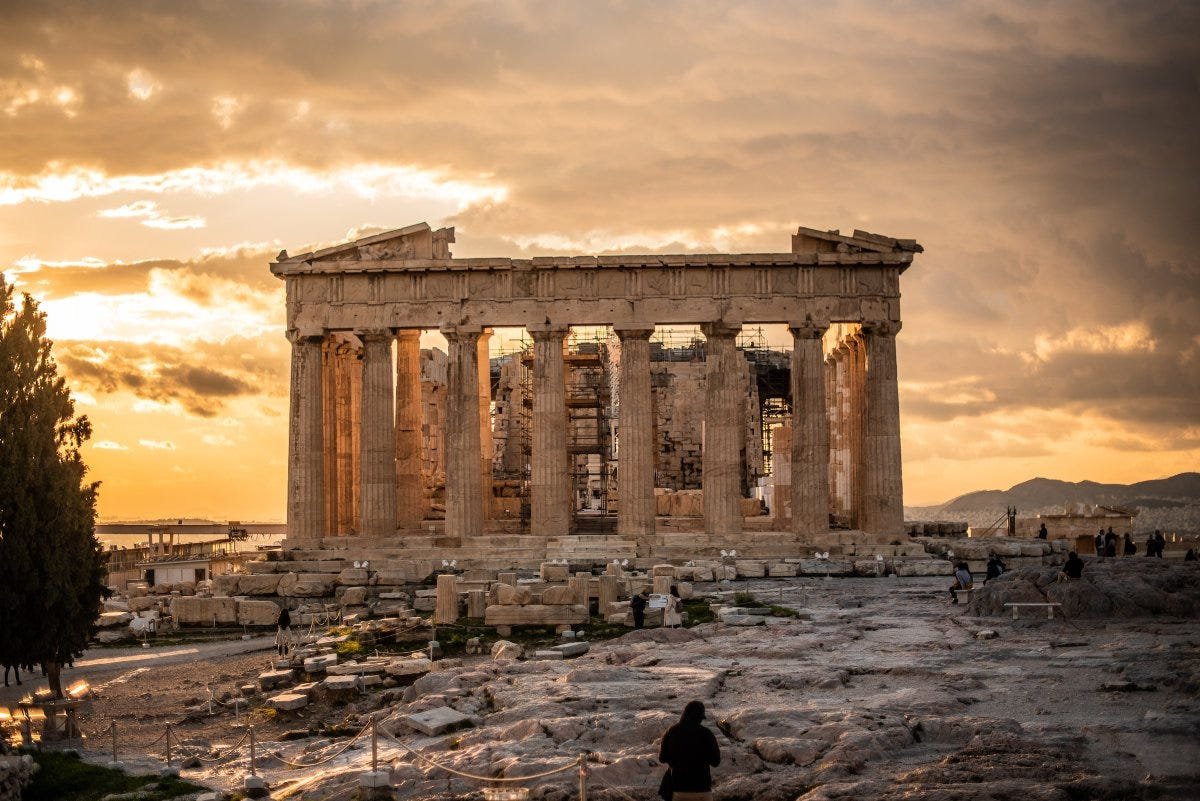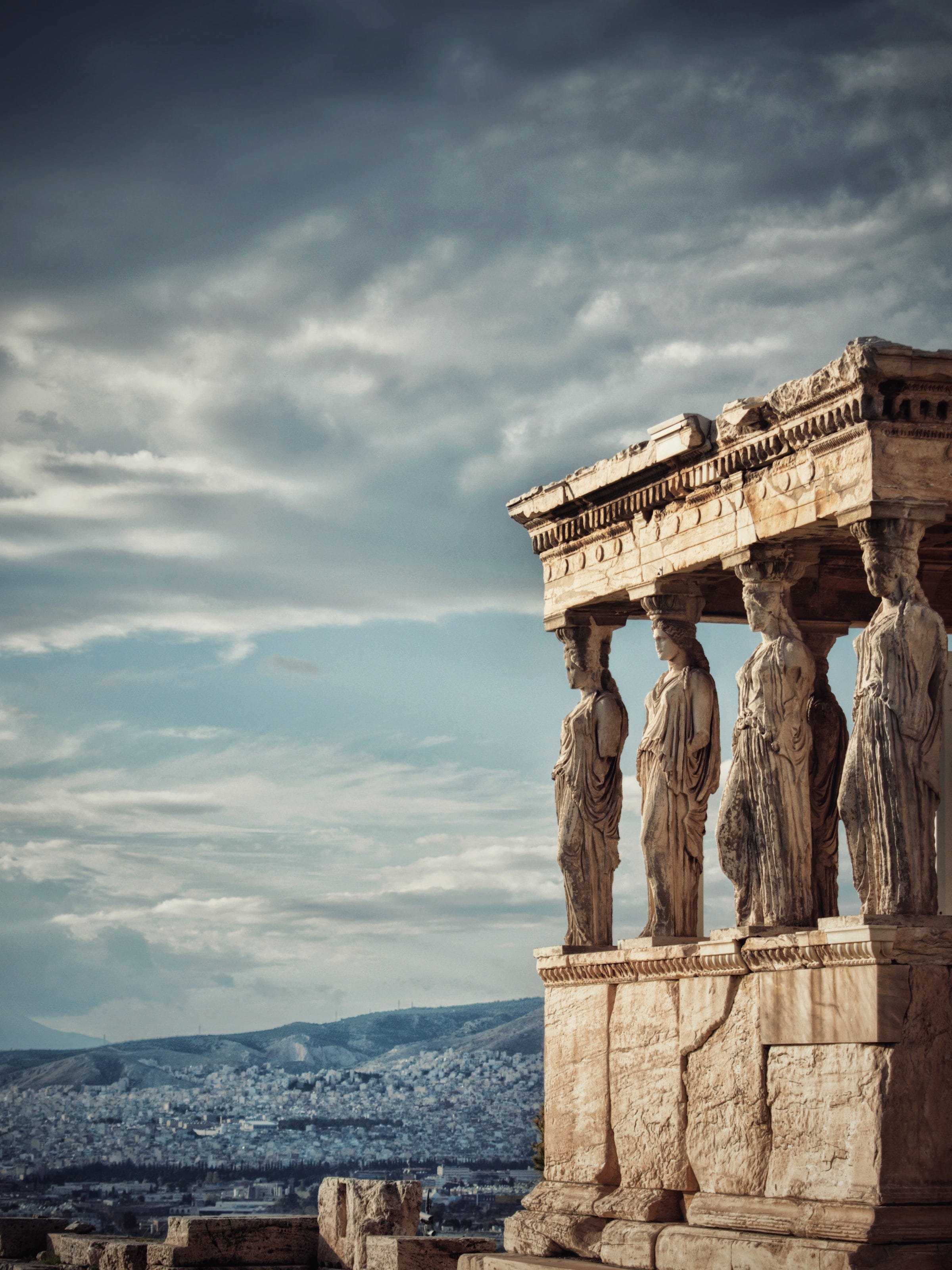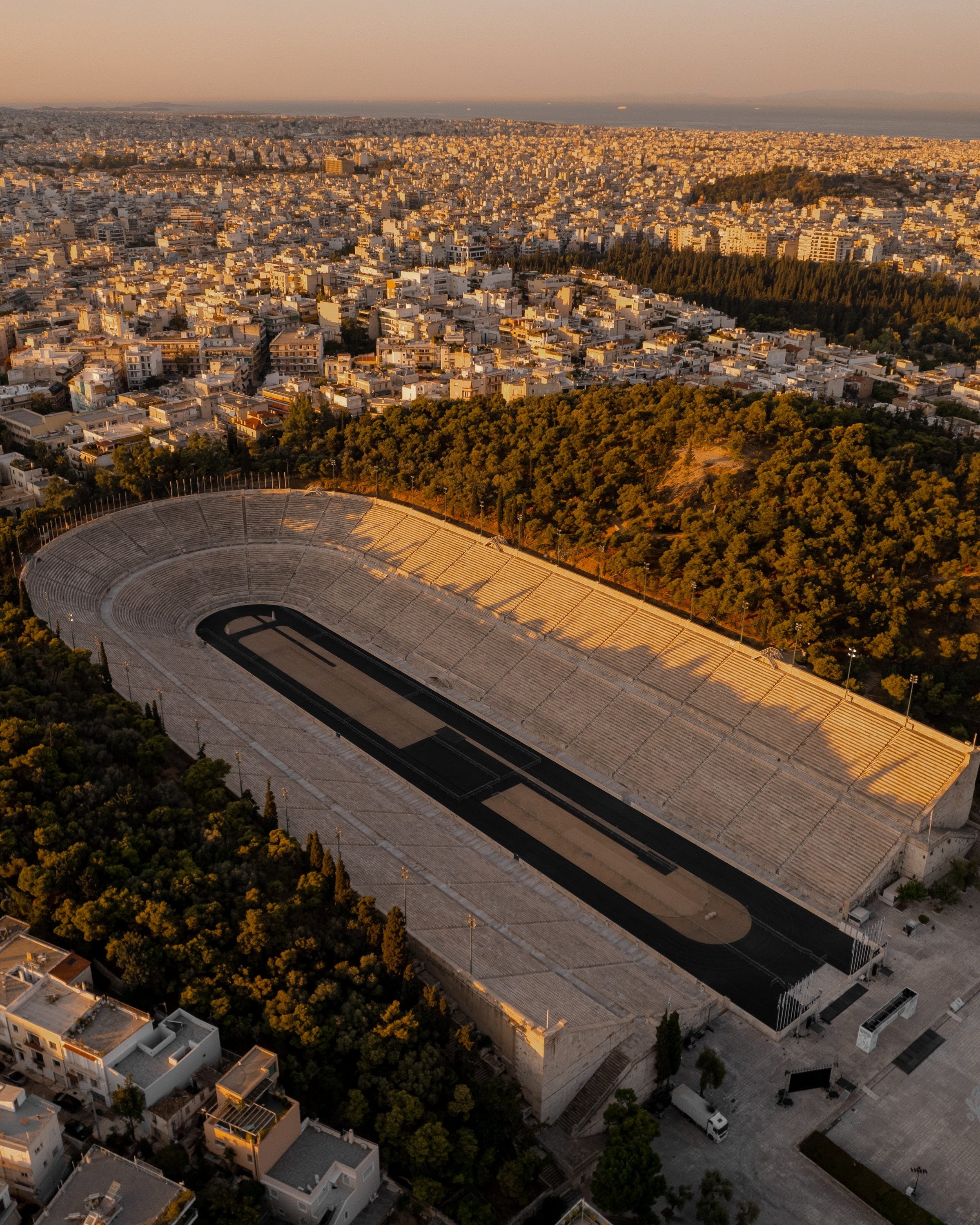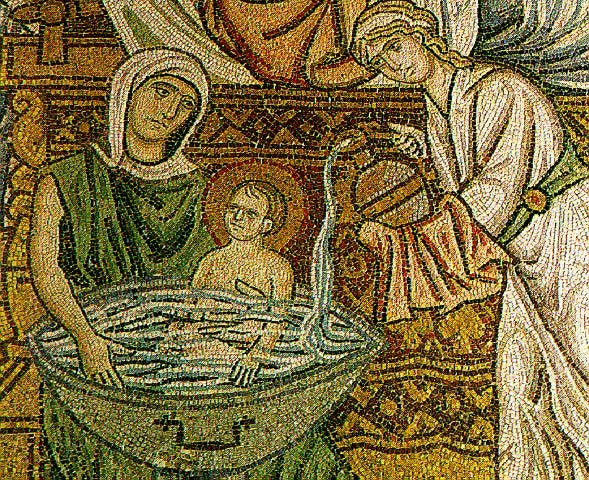Athens—3 Historical Places to Visit
Origins: Founding myth to world’s first democracy
Inhabited since Neolithic times around 3000 BC with origins as a hill-top fort atop the Acropolis.
The Founding Myth of Athens
A competition to see who could give Athenians a better gift. Poseidon struck his trident into a rock producing a spring of salt water. Athena created the first domesticated olive tree.
The judges deemed Athena the winner and the city was named Athens.
The Acropolis of Athens was an important site for the Mycenaean civilization (1750BC - 1050BC). They built a Mycenaean fortress with cyclopean walls (massive limestone boulders) and traces of this structure were found at the Acropolis. According to legend, during this phase and the time around 9th century BC, the city was ruled by Kings.
The most famous of these Kings was Theseus who was known mythologically to have killed the Minotaur.
Under his rule the region surrounding Athens (Attica) was united. And he built a palace and fortress atop the Acropolis. In the first century AD Greek philosopher Plutarch details the legend of Theseus in: Life of Theseus.
With the entire region of Attica united under Athens, it became a wealthy city-state.
And during the centuries that followed, particularly the 6th century BC, the city experienced tremendous growth and building. And in 507 BC Athenians developed their own version of popular rule that they called democracy.
The next century (5th century BC) brings us to the greatest architectural achievement of Greek Antiquity and our first site.
1. The Acropolis of Athens
'Akropolis' meaning high city is perched on a 150m (490ft) flat-top rock.
In the 5th century BC, empowered by a victory over the Persians, Pericles commissioned a great building program. With ~20 buildings it's the most complete example of an ancient Greek complex.
The Parthenon
A temple dedicated to Athena Parthenos (Athena the Virgin) was also a symbol of power of the unified city-state against its common foe. This prime example of doric architecture is made of white marble and measures 228ft (70m) long by 101ft (31m).
The Parthenon - @mixed_hype Unsplash
The Erechtheion
North of the Parthenon sits a much smaller temple that is the best example of Ionic architecture. One porch has sculpted maidens (caryatids) as columns. They are now replaced by casts and the original caryatids can be seen in the New Acropolis Museum.
Erectheion — Unsplash
Surviving for nearly 25 centuries, the Acropolis of Athens has adapted through different civilizations and religions. The Parthenon remained intact until 1687 when it was damaged by a Venetian bombardment. This unique complex became a UNESCO World Heritage site in 1987.
2. Panathenaic Stadium
Originally built in 330 BC as a racecourse for the Panathenaic games an event taking place every 4 years in Athens from 6th century BC - 3rd century AD.
In 144 AD (while under Roman rule) it was rebuilt entirely in marble by Athenian Roman Senator, Herodes Atticus with a complete capacity of 50,000.
Athens came under Roman rule in 146 BC after the battle of Corinth and Greece was divided into Roman provinces. However, Athens remained a free city-state because of its widely regarded schools.
It is the only stadium in the world to be made completely of marble.
Panathenaic Stadium - Unsplash @limonov
The stadium was abandoned after the rise of Christianity in Athens in the 4th century AD. In 1869 it was excavated and refurbished and the stadium was used in the first modern Olympic games in 1896.
The Panathenaic stadium hosted the Olympic games in 2004 as well.
Panathenaic Stadium - Opening Olympic Ceremony 1896
When Eastern Roman Emperor Justinian banned the teaching of pagan philosophy in 529 AD it sparked the end of ancient history in Athens. This ban also led to the rise of Christianity which brings us to our third building.
3. Daphni Monastery
In nearby Chaidari the Daphni Monastery was originally founded in the 6th century AD.
Built on top of a destroyed sanctuary dedicated to the Olympic god Apollo. Some of the Ionic columns used in this temple of Apollo were reused at Daphni monastery. The first monastery was built as a castle with a basilica in the middle.
This monastery fell into disrepair in later centuries and in the 11th century it was repaired.
Daphni Monastery - Unsplash @katerinan
This time it was built in Byzantine style with a cross-in-square floor plan and a large dome. The interior of the monastery includes mosaics on a gold background that are considered ‘the second golden age of Byzantine art’.
A mosaic from the monastery.
Preserving all of its 11th century art and architecture Daphni Monastery (along with two other monasteries) was given UNESCO status in 1990.
Present Day
Inhabited for over 5000 years, Athens laid the foundation for Western civilization. And and as of the 19th century it’s the self-governing capital of Greece. Through its long and storied history, Athenians have retained their passion and character.
Deep dives
This brief overview barely scratched the surface. For an introduction and retelling of Greek Mythology start with Mythos: The Greek Myths Reimagined by Stephen Fry.
To learn more about the history of Athens check out The Rise of Athens: The Story of the World’s Greatest Civilization by Anthony Everitt.
*As an Amazon Associate I may earn a small commission from qualifying purchases at no extra cost to you.







